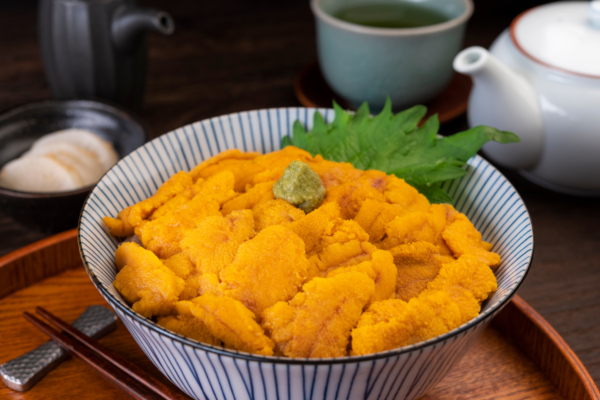This summer, Japan has experienced the hottest weather in its history, leading to a drastic decrease in the amount of sea urchins caught in the northern waters. This has resulted in the price of high-end uni donburi (sea urchin rice bowl) skyrocketing to over $100, leaving disappointed food enthusiasts who traveled far only to return empty-handed. It has also further exacerbated the cost of living pressure on the public.
According to Reuters, on the island of Rishiri in Hokkaido, a sea urchin rice bowl containing 100 grams of Hokkaido bafun sea urchin now sells for 15,000 to 18,000 Japanese yen (approximately $100 to $120), nearly double the price from a few years ago.
“Customers are shocked by the prices. A whole table of people would share just one bowl of sea urchin rice, while the others opt for ramen instead,” said Kimiko Sato, the owner of the long-standing local eatery, Sato Shokudo.
While sea urchin has always been considered a luxury ingredient, its current exorbitant prices make it a rare sight even on special occasions. Government data in Japan shows that in July 2025, food prices nationwide rose by 7.6% compared to the same period last year, with household food expenditure approaching 30%, reaching a new high in 43 years.
Tatsuaki Yamakami, the general manager of the Rishiri Fisheries Cooperative, stated that this year’s sea urchin catch has decreased by half compared to last year, causing prices at the source to double. Statistics show that the wholesale price of 10 kilograms of bafun sea urchin from Rishiri has soared to 90,000 Japanese yen, higher than the 40,000 yen two years ago.
Not only sea urchins but also other cold-water marine products such as salmon, squid, and saury have seen continuous declines in catch. In recent years, drastic fluctuations in sea water temperatures and shifts in some ocean currents have led to the northeastern region of Japan no longer being a major salmon-producing area.
Research and educational institutions in Japan’s fishing industry point out that over the past 20 years, the wholesale prices of these fish species have nearly quintupled on average, while the supply has significantly decreased. Tokyo Imperial Data Bank also highlights that high temperatures leading to decreased catch volumes and rising prices have impacted consumer purchasing willingness.
“We came to Tsukiji Market hoping to indulge, but the prices of sea urchin rice bowls and seafood rice bowls are too high, so we ended up opting for street foods like tamagoyaki and mentaiko corn dogs,” said 35-year-old traveler Momoko Asami.
Official data shows that in July, the prices of fresh food rose by 3.3% compared to the previous month, with fish and seafood categories experiencing a slight easing but still showing a 2.5% year-on-year increase. Experts point out that while Japan’s overall inflation remains lower than in Europe and America, it significantly affects fixed-income individuals such as the elderly.
Experts warn that although the Japanese government aims to increase the food self-sufficiency rate to 69% by 2030, achieving this goal could face significant challenges if marine resources continue to be unstable.

